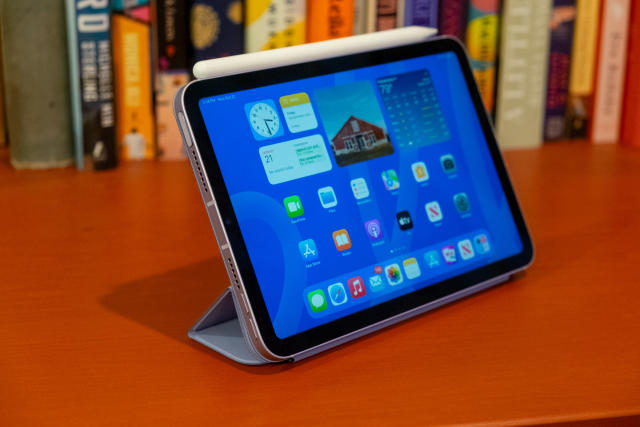Some may be surprised that the new iPad mini announced by Apple last week is not a major overhaul but a minor update. It may have been three years between iPad mini updates, but the 2021 model was the first to ditch the previously existing home button in favour of smaller bezels. Apple certainly won’t redesign the iPad mini just for the sake of redesigning it after one generation, so this is another example of a new Apple product that looks the same on the outside but has some notable upgrades on the inside.
What’s new here can be summed up as follows: more storage, support for the Apple Pencil Pro and most importantly, a more powerful chip. The A17 Pro allows the iPad mini to use Apple Intelligence features when it launches later this month, which is probably why this tablet exists. Apple clearly wants to make use of these features accessible to as many people as possible, and now every iPad the company sells (except for the entry-level model) will work with Apple Intelligence. Of course, this makes it hard to fully evaluate the iPad mini, because the Apple intelligence hasn’t arrived yet. But if you’re thinking about Apple’s newest small tablet, there’s still a lot to know.
What’s the same?
As is often the case with new iPads, no one will know if you’re using the 2021 iPad mini or this one, unless they study Apple’s color schemes closely. This year, very light shades of blue and purple have replaced the dark pink and purple options — my test iPad mini is purple, but looks just like straight-up silver in too much light. I really wish Apple offered more bold color options across most of its products, but here we are.
When it comes to the iPad mini’s design, there’s not much to complain about. It matches up perfectly with the other iPads Apple sells, with modest bezels around its screen (which are starting to look a little thick) and stereo speakers when held in landscape orientation. Those speakers sound far better than you’d expect, given the mini’s small size; Apple has been putting surprisingly great speakers in all of its products for the past few years and I’m glad that trend continues here.
The camera is still portrait-oriented, unlike all the other iPads you can buy. That doesn’t really bother me, since you’re rarely, if ever, going to put this small iPad in the keyboard dock and make a video call. I imagine most people making FaceTime calls will simply hold it like a phone.
Like previous mini and non-Pro iPads, there’s no Face ID array here. You’ll have to make do with the Touch ID sensor on the power button, which is fast and convenient enough, but still not as intuitive as Face ID. It also has the same front- and back-facing cameras as previous iPad minis. The 12-megapixel camera on the back takes surprisingly good shots in low light and should work fine for scanning documents or QR codes. But as always, just use your phone to take pictures and video – chances are it has a better camera than the iPad mini.
The same goes for the front-facing shooter. It’s fine for FaceTime calls, but photos lack detail. That’s because it’s a 12-megapixel ultra-wide camera that then crops them to a more standard field of view. In short: this camera is adequate for a tablet camera, but nothing more. And honestly, that doesn’t bother me.
The 8.3-inch screen on the iPad mini is on par with the iPad Air. It supports the P3 wide colour gamut, has an antireflective coating and is fully laminated to the front glass, unlike the entry-level iPad’s screen. All of these specs, including its resolution and 326 pixels-per-inch density, are unchanged from the previous model.
It’s a very good screen, but it’s still a standard LCD display that now has a 60Hz refresh rate. I’m not surprised by this at all, as Apple has retained its best screen technology for the iPad Pro. But pretty soon it will need to increase the refresh rate on iPads other than the Pro models (and iPhones, if we’re being honest).
